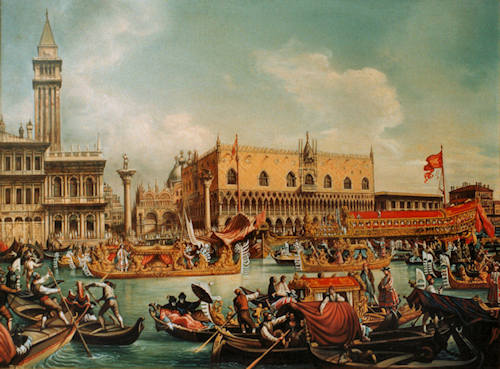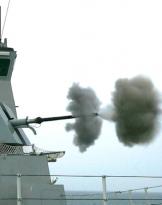After a dark period in which the border between military and merchant navies blurred in organizations often of convenience, adapted to the needs of the moment, the seed of doubt began to arise about the correct management of an instrument that was far from negligible in a maritime panorama in which clashes were the order of the day and could not be left to the improvisation of commanders who were often noble but did not possess sufficient professional skills.
The marina of the Serenissima and the vision of Angelo Emo
An example of interesting organizational development is that of the Venetian navy.
Until the seventeenth century, the commanders of the Venetian military units, called supracommittees (i.e. those above the committees, word derived from the term Komes Byzantine, somewhat equivalent to the current ones petty officers), were always chosen among gentlemen of noble origins.
Their career foresaw their embarkation first as crossbowmen, to then become stern nobles and then, if chosen by the College of the Militia from mar (a type of Admiralty Board British within the Serenissima) to take command of a ship. The navy was commanded by general administrator from Mar, while the naval squadron commander was said boss from Mar, with the meaning of admiral.
 Actually the title of admiralrather than a military commander, designated an expert in maritime matters, and was the responsibility of three officers employed in the port of Venice (theadmiral of the arsenal, military commander of the Arsenale, theAdmiral of the Lido andAdmiral of Malamocco) and to the commander of the Bucintoro, the splendid ducal ship. Both the general administrator from Mar the sea boss they were chosen by the Senate of the Republic.
Actually the title of admiralrather than a military commander, designated an expert in maritime matters, and was the responsibility of three officers employed in the port of Venice (theadmiral of the arsenal, military commander of the Arsenale, theAdmiral of the Lido andAdmiral of Malamocco) and to the commander of the Bucintoro, the splendid ducal ship. Both the general administrator from Mar the sea boss they were chosen by the Senate of the Republic.
Then there were the figures of the commanders of the fortresses (similar to the heads of a current maritime department) who took the name of administrator; when embarked these garrison commanders were called armiger captains.
Fleet organization
The fleet, in Venetian armada, was divided among the ships assigned to thebig army (sailing fleet) whose chain of command included a ship captain (always of patrician rank), theadmiral, patroness of ships, ship governor and of nobles, and the 'slim army (rowing fleet) whose ship's captain was a super committee, always of patrician rank, with the committee (first officer), thearmory (shunting officer) ei stern nobles (two or three officers in training).
In the merchant marine the situation was a little better as there was the figure of the masters patrons who, of modest origins, after a long iteration on board commanded commercial ships. They were generally merchants who, in order to take command and be considered commanders, had to spend at least ten years on board.
 As in most 600th century navies, the presence of nobles who assumed the role of commanders, often without having the skills and putting the safety of the ship and its crew at risk, was an element of weakness. This was a minor problem in Venice which owed its fortune to maritime trade, but it did not solve the problem; there were merchants, skilled commanders, who on occasion transformed themselves into combatants on the sea, and gentlemen whose interest was often in acquiring political, military and administrative skills, a kind of apprenticeship required by the Republic of the Serenissima to train future leaders in all vital sectors of society but whose naval preparation was often insufficient, effectively delegating the management of maneuvers to lower officers.
As in most 600th century navies, the presence of nobles who assumed the role of commanders, often without having the skills and putting the safety of the ship and its crew at risk, was an element of weakness. This was a minor problem in Venice which owed its fortune to maritime trade, but it did not solve the problem; there were merchants, skilled commanders, who on occasion transformed themselves into combatants on the sea, and gentlemen whose interest was often in acquiring political, military and administrative skills, a kind of apprenticeship required by the Republic of the Serenissima to train future leaders in all vital sectors of society but whose naval preparation was often insufficient, effectively delegating the management of maneuvers to lower officers.
Their skill and ability was therefore often devolved to their employees and did not always give guarantees. The problem took on greater problems on a tactical level, i.e. of opposition against the enemy forces.
Obviously this limited view penalized the creation of a professional officer corps responsible for commanding units of the fleet and was exacerbated in the XNUMXth century; in that golden age of the navy, most of the European naval powers oriented themselves, albeit to varying degrees, towards institutionalizing the category of officers, integrated into the State with public functions paid by the State.
Worthy of note was the reform of the Venetian admiral Angelo Emo (image), the last great operational commander of the Navy of the Serenissima who forced the captains of the ships to strictly respect the roles of crew engagement, formalizing a hierarchy of command between the 4 pilots already planned. In practice transforming the already existing figures of first lieutenant, second lieutenant, second lieutenant e Bishop into modern officers who had to comply with precise regulations and training and hierarchical procedures.
The English Navy

Probably the reform, strongly desired by Angelo Emo in 1775, was inspired by the analogous one underway since 1740 in the Royal Navy aimed at radically regularizing managerial management across the Channel, starting from the use of uniforms which, as the word implies, had to be "uniforms ” at equal level and not a set of harlequins related to social status.
The development of the concept of regulation in the English Royal Navy was the first step towards a professionalisation of the military, starting with the officers who, before 1740, were selected according to their social status. The new officers adopted dark blue uniforms (not for elegance but for practical reasons related to reducing the wear and tear effects of bad weather). The blue uniform then became a standard for all naval officers and spread throughout the navies over time.
There were only three ranks in the Royal Navy at the time: captain, lieutenant and sailing masterresponsible for managing the vessel. In a short time the term "sailing master" became "master and commander", then shortened to "commander" who received orders from the captain on the mission but had maximum autonomy in executing maneuvers and managing the ship.
A milestone was the issuing in 1748 of regulations for the uniforms of naval officers by Lord Anson; it may seem a minimal fact but in that way the figure of the officers who would have worn the same uniform, regardless of their social rank, and assumed an increasingly binding legal role being, in fact, paid by the State was unequivocally identified.
At the end of the XNUMXth century the use of the uniform spread to all maritime countries, with the introduction first of shoulder pads and then of ranks on the sleeves, in order to be able to distinguish the different ranks. Gold embroidery on the cuffs and collar was not initially indicative of rank but was placed to indicate the officer's wealth and status but with the new regulation it became a hallmark. Uniforming their style was also an indirect way of eliminating unnecessary privileges. was born the naval officer, the gentleman officer.
A model that of the professional officer that still lasts today and distinguishes, both in the military and maritime branches, a professional category characterized by precise rules and ethics.
The Royal Navy's revolutionary drive to professionalise soon spread throughout Europe, Asia and the UK New world and the uniforms somehow kept a similar matrix. On the other hand, there is no universal armed force like the Navy.
As Plato said “There are three kinds of men: the living, the dead, and those who go to sea”, united by saltiness and a unique spirit which, beyond the flags they serve, makes them sons of the sea.
There is still a lot to tell and in a future article we will talk more about the origin of the different ranks in the navies...
(Continued)
Read: "The maritime organization in ancient times (first part)"
REFERENCES
http://www.societaitalianastoriamilitare.org/quaderni/atti%20SISM%20Vene...
Clowes William Laird, Markham Clements Robert, Mahan Alfred Thayer Wilson Herbert Wrigley (1897–1903). The Royal Navy, a history from the earliest times to the present. Vol. I. London, Samson Low, Marston, Co.
https://archive.org/details/royalnavyhistory01clow/page/6/mode/2up
Photo: web
(article originally published on https://www.ocean4future.org)












